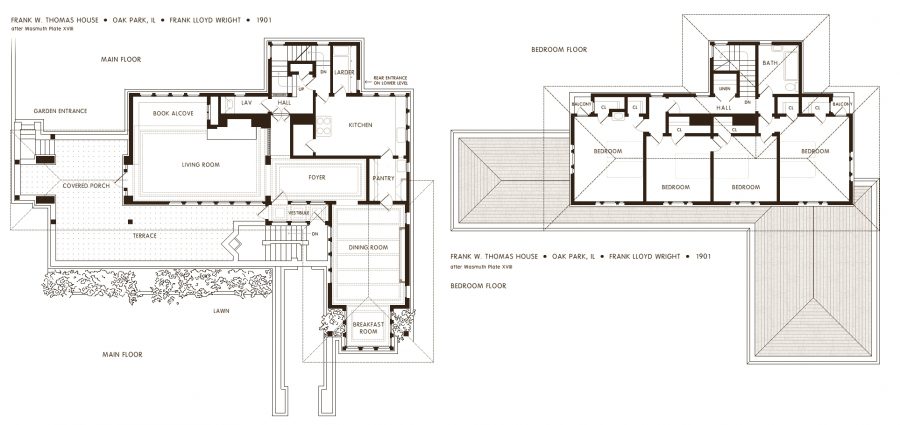Architecture has given way to many art and structure forms, some even redefining what structures can support people or messages concerning some idea. Architects make up the world where we live and how we think about design in our lives, which is why it’s so important to know about some of the most significant and creative professionals among them.
Architecture is essentially the art or practice of designing and constructing buildings or some other form of structure.
It can be applied to a vast variety of other concepts, such as engineering, and is meant to add a symbol or representation of certain emotions people can relate to. The idea has developed our world since the beginning of the first civilizations and new brilliant architects continue to shape it and our understanding of it.
Such brilliant architects includes Frank Lloyd Wright, an American interior designer and architect. For more than seven decades, Wright has given some of the most important structures and designs to the United States, so much so it has earned him the title “Greatest American Architect of All Time.” Take the Darwin D. Martin House, the most important and greatest project of Wright located in Buffalo, New York. The design was meant to construct a house for wealthy Chicago businessman Darwin D. Martin, which was Wright’s first major commercial project. Wright would continue to make innovative designs, with the support of Darwin, such as the Guggenheim in Manhattan and the iconic Fallingwater in Mill Run, Pennsylvania; both structures look as if they’ve adapted to their environment and taken on the color tones and shapes of it, giving a sense of purpose and organic position.
Wright purposely gave off this sense, as his philosophy has always emphasized the belief in staying organic and how his work is supposed to influence the environment in which he planned it out on. And taking a closer look, his work could not display his imagery anymore; the mentioned Fallingwater takes a forest setting and really blends in with the color scheme and formations, same goes for the Guggenheim and its urban setting.
It’s not to say all the brilliant architects come from one place, for the world has much more to offer. Daniel Libeskind, originating from Poland, is another architect that made a career in America. The designer takes advantage of deconstructivism, the postmodern architecture movement where structures looked fragmented and distorted to give a sense of absence in symmetry and harmony, and uses it as inspiration to his structure. Libeskind’s most recognizable work, the Jewish Museum Berlin in Berlin, Germany, demonstrates the influence; a disfigured, sharp-ended building that houses and commemorates memories of the German/Jewish relations up to the end of the 20th century. His building is misshapen and has no symmetrical pattern, as if different sizes of blocks make it up, and the same can be said for the interior.
The son of two Holocaust survivors, Libeskind’s motive towards his design on this museum, and his work in general, came from his heritage and a view on a “broken globe.” Such a view can be seen in his structure, the Imperial War Museum North in Greater Manchester, England; another misshapen building that entertains a blend of three elements, each signifying a certain part of the museum that differs completely from another. Giving an area to recognize the British people of the 20th century, Libeskind’s work evokes a cultural memory that blends within the actual building and the same can be said for the Jewish Museum Berlin building and all his other work as the idea acts as the foundation to his philosophy.
Unlike the “broken world” idea that Libeskind used as architectural inspiration, Cesar Pelli’s philosophy focuses around the growth of a world. An Argentinian-blooded architect contributing his work to America, Pelli believes that when designing a structure, it should utilize modern tech as well as display a look that portrays the use of said tech. In doing so, the architecture emphasized the purpose for its construction and characteristics and the work becomes more appealing. This ideal has rubbed off on the Pacific Design Center of Los Angeles, California; a multi-colored and obscured structure that Pelli designed, yet the most significant and recognizable one of his career.
As complex creatures, we are drawn to captivating sights that is meant to provide for us and stand for something more,and it’s the job of architects to provide as well. Frank Lloyd Wright’s work is more well known and famous in the field community because he provides those sights to a peak; his work does a marvelous job at blending into its surrounding as if it was organically molded there, as well as stand out to its audience with aue. Whether it be the modern take of the previously mentioned Guggenheim structure or the woody color pallet of Falling Water, Wright’s work stands with a purpose and many future architects are trying to follow in his footsteps while staying organic.
LATEST NEWS
- Bruins Baseball ranks second in the state, April 20
- Stress, anxiety skyrocket as students prepare for upcoming AP tests
- RBHS holds successful night of percussion
- Not even water?
- Solar eclipse to pass through Missouri, April 8
- How CPS is organized: a guide
- City of Columbia to hold school board election April 2
- Youth Election Participants to assist in upcoming municipal election
- City of Columbia hosts first Community Engagement Session for McKinney Building, hopes to gain public insight on the structure’s future
- RBHS Track Team Opener at Battle Gallery





















































































